The President Directs Americans to Liberate Michigan, Minnesota, and Virginia
In a series of tweets last Friday, President Trump directed Americans to liberate three states where Governors had issued state-at-home orders. First, he tweeted: “LIBERATE MICHIGAN!” Then, “LIBERATE MINNESOTA!” And finally, “LIBERATE VIRGINIA, and save your great 2nd Amendment. It is under siege!” Notably, states with similar orders that have Republican Governors (such as Maryland and Ohio) were not included in the President’s social media posts. With tens of millions unemployed, the President has been growing increasingly concerned about the impact of the pandemic on the economy, especially in an election year. Furthermore, there is a chorus of voices, particularly among the President’s most ardent supporters, that believes the health risks associated with COVID-19 have been overblown and that the protective measures to combat the pandemic needlessly harm our economy. To date, more than 40,000 Americans have died from the disease.
- The President’s tweets are just words. Aren’t they?No, unfortunately not. In the days before his tweets, armed protestors outside of the state capitol building in Lansing, Michigan protested Governor Gretchen Whitmer’s stay-at-home orders with chants of “Lock her up!” Similar but smaller protests popped up on the state capitol grounds in Richmond, Virginia and outside the governor’s mansion in St. Paul, Minnesota. Given this context, a former DOJ official has even claimed that Trump’s tweets were inciting Americans to insurrection against Democratic Governors, a serious crime under federal law. But even barring that provocative interpretation, the President has more than 77 million twitter followers and when he tweets, people listen. Others hear what they want to hear. It is entirely possible that his tweets could have led to violence. They still might.Furthermore, in the weekend following President Trump’s tweets, many Americans violated social distancing orders while protesting at state capitols throughout the country. The President of the United States has a responsibility to take actions that are in the best interests of the people. And his tweets, combined with other comments he’s made that many social distancing rules are “too tough,” encourage people to put the public health at risk.
- Can’t the President “liberate” the states himself during a crisis?No. In fact, it is possible that the President’s tweets were, at least in part, out of frustration that he cannot re-open the states as he’d like. In a press conference last week, the President stated that “[w]hen somebody’s the president of the United States, the authority is total.” However, this assertion of absolute power during an emergency was roundly criticized across the ideological spectrum as running counter to separation of powers, in which the executive branch shares federal power with Congress and the Judicial Branch, and to federalism, in which all rights not delegated to the federal government are reserved to the states. Indeed, under the principle of federalism, states have the power to protect the welfare, safety, and health of their respective populations. John Yoo, a senior attorney in the administration of George W. Bush with an expansive view of executive power, even penned a National Review article stating that “[o]nly the states can impose quarantines, close institutions and businesses, and limit intrastate travel.”

Congress Struggles to do Its Job during the Pandemic
Due to coronavirus concerns, Congress has not been present in DC after passing the first installment of the stimulus plan in March. There is currently no mechanism for members of Congress to vote online, despite many schools and businesses having transitioned to a virtual work environment. Senate Majority Leader Mitch McConnell has attempted to reassure the public that Congress will work from home during the pandemic, but it hasn’t been clear how much substantive work can actually be done. So far, Congress has relied on unanimous consent, a procedure “in which a member asks for everyone to agree to the bill and, in the absence of an objection, the agreement [becomes] official.” There is, however, a growing interest to implement remote voting in the House with an expected House vote on Thursday.
- Is governing by unanimous consent ineffective? On Tuesday, the Senate passed an additional installment to the Paycheck Protection Program, with a $480 billion dollar relief package via unanimous consent. Generally, unanimous consent is only possible when the bill is non-controversial, since it takes only one objection to obstruct the process. Indeed, Republican Representative Thomas Massie blocked unanimous consent in the first installment of the stimulus plan, forcing hundreds of members to reconvene for an in-person vote. Although an argument could be made that unanimous consent forces bi-partisanship, in the final analysis, it is a sub-par form of governing. One dissenting voice, as illustrated by the case of Thomas Massie, has extraordinary power to throw everything into chaos. And the US Congress lags behind other democracies around the world, which have continued legislative activities with a semblance of normalcy by using commonly available technologies. The UK is proceeding with a “virtual parliament” plan, and Germany, Lithuania, and Norway, among other nations, have replaced in-person committee meetings with video conferencing.
- Is a virtual Congress constitutional? Yes. There is nothing in the language of the Constitution that mandates a physical location for voting. Of course, the founders assumed that voting would be conducted in a certain physical location with the members physically present. They didn’t have Zoom back then, after all! But their assumptions are irrelevant because, as Deborah Pearlstein argues in The Atlantic, the Constitution explicitly leaves it up to each house of Congress to “determine the Rules of its Proceedings,” per Article I, Section 5. The Supreme Court has affirmed this interpretation saying that Congress has discretion in terms of its rules as long as there is a “reasonable relation between the mode or method of proceeding established by the rule and the result which is sought to be attained.” And given that a virtual Congress is constitutional, Congress should seriously consider implementing it so that it can vote on other important issues unburdened by constraints of unanimous consent. For example, the U.S. Postal Service, which was excluded from both installments of the stimulus package, is hundreds of billions of dollars in debt and needs a bailout. How can we even contemplate vote-by-mail in the 2020 election without the Postal Service? And states hit hardest by the pandemic, like New York and New Jersey, still need direct aid from the federal government.
___
Democracy At Work

Taiwan’s Democracy Harnesses the Power of the Internet
Taiwan has received many plaudits for its effective response to the coronavirus, particularly regarding its innovative use of technology, like an online app to order masks. But Taiwan’s technological prowess extends far beyond its effort to flatten the curve. The country’s efforts in internet-fueled democracy have been one of the most fascinating experiments in the liberal-democratic world in recent years.
For example, in 2014, the Sunflower Student Movement in Taiwan launched a series of protests against a secretive trade agreement with China. To rebuild public trust the Taiwanese government began working with the hacktivist community G0v (Gov Zero), whose digital platforms had aided the protest movement. Since then, Taiwan has been using crowd-sourcing technology to receive public proposals and comments on legislation. And a digital tool called Pol.is uses machine learning to highlight areas of agreement.
- When did Taiwan become a democracy? Since the end of martial law in the late 1980’s, Taiwan has become a regional and world leader in democracy. This is in contrast to the one party communist state in China that is currently engaged in a campaign of mass imprisonment and surveillance of its Uyghur minority.Taiwan’s democratic character has complicated its relations with Mainland China. Stressing Taiwan’s distinctiveness, leaders like current President Tsai Ing-wen consider Taiwan an independent state, and do not entertain prospects of reunification with the mainland, especially given the recent crackdown on the more liberal government of Hong Kong. And Taiwan’s democracy has given it an advantage over China in fighting COVID-19, despite the World Health Organization’s (WHO) adamant refusal to recognize the country.
- What lessons can the United States learn from Taiwan?In the US, there are significant concerns about the role of technology in improving the quality of our democratic processes. In 2016, America’s digital ecosystem was a target of hacking efforts by the Russian government to interfere with our presidential elections. And more generally, social media companies have played an unfortunate role in the increasing polarization and misinformation that characterize our society and political dialogue. Even before the current political crisis, in 2013, there was major controversy following the reveal of the scope of the NSA’s surveillance of private citizens. Taiwan is a welcome reminder, however, that technological advancement can still be a great boon to transparency and levels of public engagement in governance. This is especially the case when the government is open to bringing in activist groups like G0v into the policy making process to improve trust between “insiders” and “outsiders” in the system.

COVID-19 Helps Unite the Divided City of Mostar
Mostar is a historic city in the Balkan nation of Bosnia and Herzegovina. Since the Yugoslav Wars of the 1990s, the city has been starkly divided between Catholic Bosnian Croats in the west and Muslim Bosniaks in the east. This division even applies to where people go to seek medical treatment. The hospitals in east and west Mostar primarily treat their side’s ethnicity. However, when a woman in childbirth at the predominantly Croat Catholic western Mostar hospital was found to have the coronavirus, all of the labor ward’s operations were moved to the eastern side’s hospital while the original ward was sterilized.
Although public health crises can lead to panics that reinforce prejudice and exclusion (see our previous work here on “China Virus”), the brave medical professionals of Mostar show how struggles can also remind us of our common humanity and responsibilities to one another. And there is, at least, a possibility that the common effort required by Covid-19 could have a positive effect on Bosnia’s tumultuous political situation. Even the secessionist Bosnian Serb leader Milorad Dodik has abandoned his divisive rhetoric, at least temporarily.
- How is this story relevant to American democracy?
In diverse countries with high degrees of potential for ethnic conflict, it is crucial to develop an overarching sense of civic identity that people of all backgrounds can share in. The recent steps taken in Mostar show how a shared identification and ethic of civic responsibility can enable populations to cooperate to save lives despite relatively recent memories of wartime violence. Indeed, during the 1990’s, Mostar was besieged twice. If Bosniaks and Croatian Bosnians can put aside their differences, then certainly Americans can. We need to remember that, despite our deep disagreements on the path of our nation, we are still responsible for one another.



